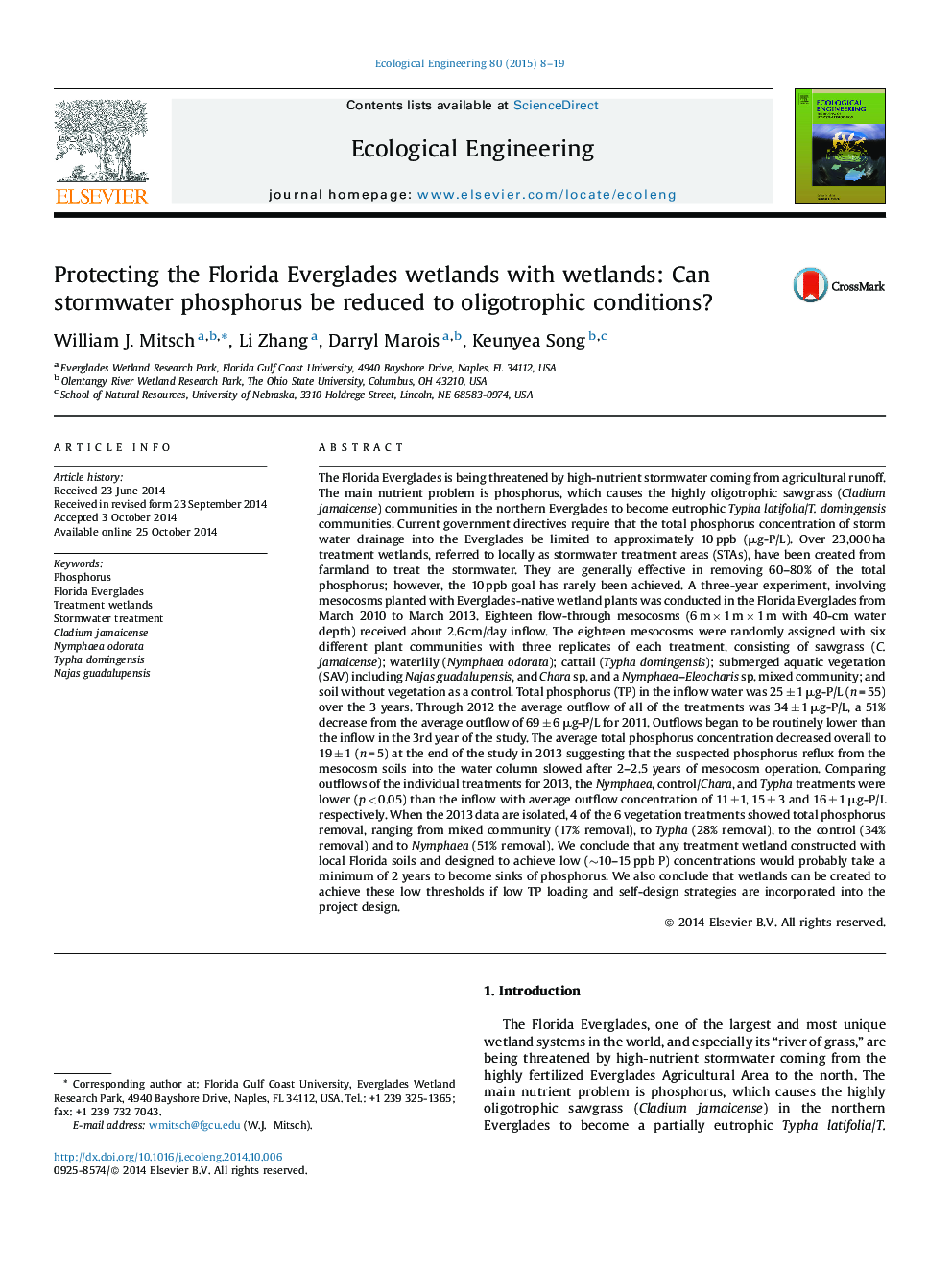| Article ID | Journal | Published Year | Pages | File Type |
|---|---|---|---|---|
| 4389025 | Ecological Engineering | 2015 | 12 Pages |
The Florida Everglades is being threatened by high-nutrient stormwater coming from agricultural runoff. The main nutrient problem is phosphorus, which causes the highly oligotrophic sawgrass (Cladium jamaicense) communities in the northern Everglades to become eutrophic Typha latifolia/T. domingensis communities. Current government directives require that the total phosphorus concentration of storm water drainage into the Everglades be limited to approximately 10 ppb (μg-P/L). Over 23,000 ha treatment wetlands, referred to locally as stormwater treatment areas (STAs), have been created from farmland to treat the stormwater. They are generally effective in removing 60–80% of the total phosphorus; however, the 10 ppb goal has rarely been achieved. A three-year experiment, involving mesocosms planted with Everglades-native wetland plants was conducted in the Florida Everglades from March 2010 to March 2013. Eighteen flow-through mesocosms (6 m × 1 m × 1 m with 40-cm water depth) received about 2.6 cm/day inflow. The eighteen mesocosms were randomly assigned with six different plant communities with three replicates of each treatment, consisting of sawgrass (C. jamaicense); waterlily (Nymphaea odorata); cattail (Typha domingensis); submerged aquatic vegetation (SAV) including Najas guadalupensis, and Chara sp. and a Nymphaea–Eleocharis sp. mixed community; and soil without vegetation as a control. Total phosphorus (TP) in the inflow water was 25 ± 1 μg-P/L (n = 55) over the 3 years. Through 2012 the average outflow of all of the treatments was 34 ± 1 μg-P/L, a 51% decrease from the average outflow of 69 ± 6 μg-P/L for 2011. Outflows began to be routinely lower than the inflow in the 3rd year of the study. The average total phosphorus concentration decreased overall to 19 ± 1 (n = 5) at the end of the study in 2013 suggesting that the suspected phosphorus reflux from the mesocosm soils into the water column slowed after 2–2.5 years of mesocosm operation. Comparing outflows of the individual treatments for 2013, the Nymphaea, control/Chara, and Typha treatments were lower (p < 0.05) than the inflow with average outflow concentration of 11 ± 1, 15 ± 3 and 16 ± 1 μg-P/L respectively. When the 2013 data are isolated, 4 of the 6 vegetation treatments showed total phosphorus removal, ranging from mixed community (17% removal), to Typha (28% removal), to the control (34% removal) and to Nymphaea (51% removal). We conclude that any treatment wetland constructed with local Florida soils and designed to achieve low (∼10–15 ppb P) concentrations would probably take a minimum of 2 years to become sinks of phosphorus. We also conclude that wetlands can be created to achieve these low thresholds if low TP loading and self-design strategies are incorporated into the project design.
